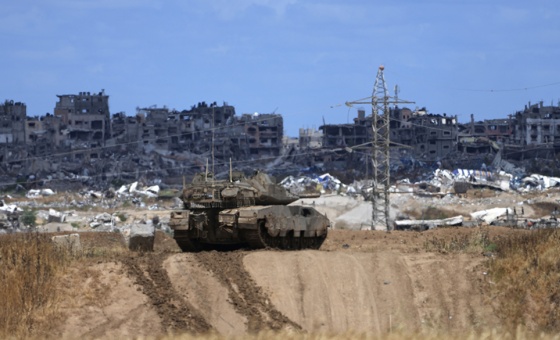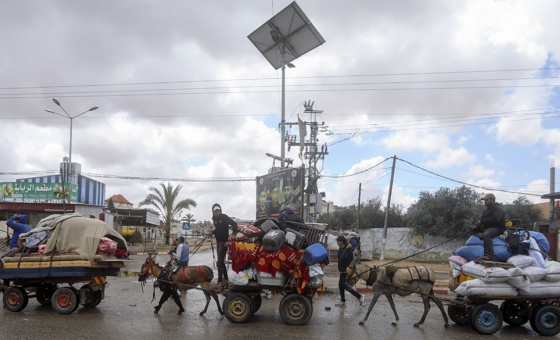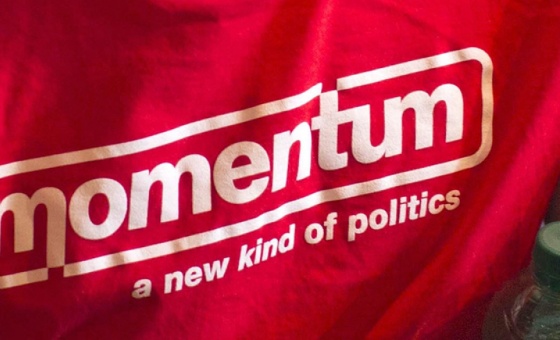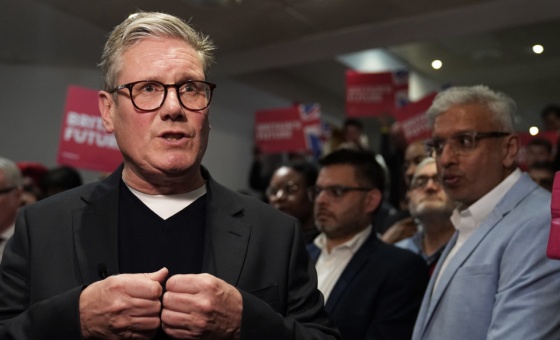This is the last article you can read this month
You can read more article this month
You can read more articles this month
Sorry your limit is up for this month
Reset on:
Please help support the Morning Star by subscribing here
THE whole revolution had to be planned in such secrecy that only a few officers knew about it and no-one could be certain how far other regiments would support them.
It is amazing how small groups of soldiers, like these with their obsolete vehicles, were nevertheless able to frighten and scatter the dictatorship’s demoralised forces.
“We had strict instructions not to open fire unless absolutely necessary,” a major tells us. “We wanted to avoid the spilling of blood at all costs, so we spoke to the non-committed troops trying to win them over to our side. This we managed to do. Only one or two top-ranking officers refused to join us, and they were arrested.” It was a totally bloodless revolution.
Most of the soldiers had had enough of the debilitating war in the colonies which was doomed anyway and was devouring the last remaining resources of the country.
Over the following days, weeks, and months these soldiers, unused to civilian administration, grappled uncertainly with the enormous tasks facing them of setting up new structures to govern the country.
The Communist Party was the only one in the country that had existed on the ground throughout the dictatorship and at great sacrifice and cost. During the run-up to the first 1975 April elections to the Constituent Assembly the party stressed that its 247 candidates had between them accumulated 440 years behind bars!
The party was at this moment the best organised political force and took on a leading role. At the first May Day rally after the coup in Lisbon, the atmosphere was reminiscent of scenes in the newly liberated countries at the end of the second world war.
The main bases of the Portuguese Communist Party (PCP) were, apart from the industrial centres in and around Lisbon, in the Alentejo, that broad swathe of agricultural land south of the river Tejo.
In Alentejo, a few large landowners owned enormous estates and employed thousands of agricultural workers, often on a seasonal basis and on starvation wages. This agricultural proletariat was unusual in Europe. The struggle for basic rights had been an ongoing one in the Alentejo region throughout the years of fascism, often taking the form of pitched battles between workers and the National Guard.
Travelling south from Lisbon, crossing the swirling, muddy waters of the river Tejo, through the rich alluvial plains, past Grandola which gave its name to the song of the revolution, you reach the regional capital Beja, in the heartland of the Alentejo.
Since most of the big landowners were absentee ones or had fled after the revolution, workers on a number of them have taken over and set up co-operatives.
Santa Vitoria is a typical estate, whose owner lived in Lisbon. It was the first one in the country to be taken over by the workers and turned into a co-operative after April 25. Its chairman, Antonio Merencio, shows us around. In the fields, both women and men are working, planting out a new crop.
Here in Alentejo men and women work alongside each other in the fields. Two incomes are essential if families are to survive. Women form a large percentage of the workforce and there is no separation of roles based on gender. They dress like the men, too, with dark trilby hats over colourful headscarves, short black bell-shaped skirts, over loose trousers.
Their dress is practical in that it protects them from the vicious sun while working in the open fields and is also symbolic, stressing their equality with men and their proletarian status. Women have indeed played a leading role in past struggles, and several have been killed by the fascist police.
The owners of this estate employed most of the workers on a seasonal basis, bringing them in when harvesting time came around but laying most of them off during the winter months.
The owners were so stingy, the workers tell us, that they even refused to allow their workers to draw drinking water from the estate’s wells — an extreme measure in a hot country.
We are impressed by the seemingly smooth organisation of the co-operatives, their democratic structure, and their ideals. Here are semi-literate agricultural labourers with little or no experience of administration running their own enterprise for the first time in a true spirit of collective responsibility.
In the early years after the revolutionary overthrow of the dictatorship, many such co-operatives were formed by the workers, but very soon, under Mario Soares’s so-called “Socialist” government they would be dismantled and handed back to their former owners.
Many leading trade unionists and communists spent long years languishing in Portugal’s antiquated and inhuman jails. One of those was Antonio Dias Lourenco, who became the editor of Avante, the party’s daily paper. He had been held in the fortress of Peniche, first built in 1557, on the cold and windswept Atlantic coast.
Peniche is a typically small Portuguese fishing town, with its whitewashed houses, orange-tree-lined narrow streets, its big open market square and its picturesque port where the gaily painted wooden fishing boats rock gently in the water. The fortress dominates the main square where the fishermen’s wives sit during the day repairing the nets ready for the evening sailings.
From this forbidding, damp, stone-built prison, battered continuously by the rough Atlantic swell, Dias Lourenco made his escape in the ’60s by springing from the battlements into the sea one cold December day.
He returned with us to show us where he’d been held and to tell the story of his escape. The prison was in the safe hands of the revolutionary officers of the MFA (Movimento das Forcas Armadas/Armed Forces Movement) and the cells now held former officers of the fascist secret services, who were held under very liberal conditions.
Most of the leading communists, including their legendary leader, Alvaro Cunhal, had been held in Peniche. Cunhal, together with a small group of other comrades also made a spectacular escape from this fortress jail on January 3 1960 by chloroforming their guard, clambering over the outer wall using a rope they’d smuggled in.
It was typical of these men that they were extremely reticent about telling stories of their own individual exploits and heroism. Our interpreter on this occasion, Carlos Placido de Souza, was no exception.
He was a shy, rather diffident, former biochemist who would not have looked out of place behind a desk in some big government office or bank.
We knew he had been a party activist and fled during the dictatorship to Britain, but only after we’d finished filming at the prison did he reveal that he was the person who had supplied the chloroform for the escape and driven one of the getaway cars.
It is common knowledge what happened to the April revolution, after those early heady days, but not everyone is familiar with the details. We returned regularly during the first years after 1974 and were able to document how those tremendous hopes, the potential for radical change and the aspirations, were subject to a gradual and systematic destruction.
There was the economic sabotage by the powerful capitalist nations and Portugal’s own ruling class; the US appointed a new ambassador — Frank Carlucci — who had been their man in the Congo when Patrice Lumumba was assassinated, and in Brazil before the military coup and bloody suppression of democracy there. He did his best to ensure that Portugal remained firmly in the capitalist camp.
The sabotage, though, was not purely of a behind-the-scenes, peaceful nature: one night we were shaken out of our beds on the central Avenida Libertade when a car bomb went off in front of the Lisbon offices of the PCP.
We also met a carpenter in Rio Major who manufactured wooden clubs for, as he advertised it, “bashing communists,” and we saw how the party politicking began to divide the people, pitting them against each other, sowing mistrust and destroying the unity of those early days.
The Socialist Party of Mario Soares, widely viewed as the only credible force to counter the communists, was being financed and promoted with the help of the Socialist International and capitalist interests which could see clearly that his “socialism” was a fig-leaf.
The ultra-leftist forces, although small, were also active and disruptive, demanding an immediate and full-blown socialist transformation. Over succeeding years, the country’s economy deteriorated, disillusion set in, and communists were eventually ousted from the interim government.
Soares became the first civilian prime minister in 1976, thanks to communist support, and president in 1991. He happily presided over a country still firmly capitalist and hardly any better off economically than in the past, although it was now a pluralist and stable democracy.












